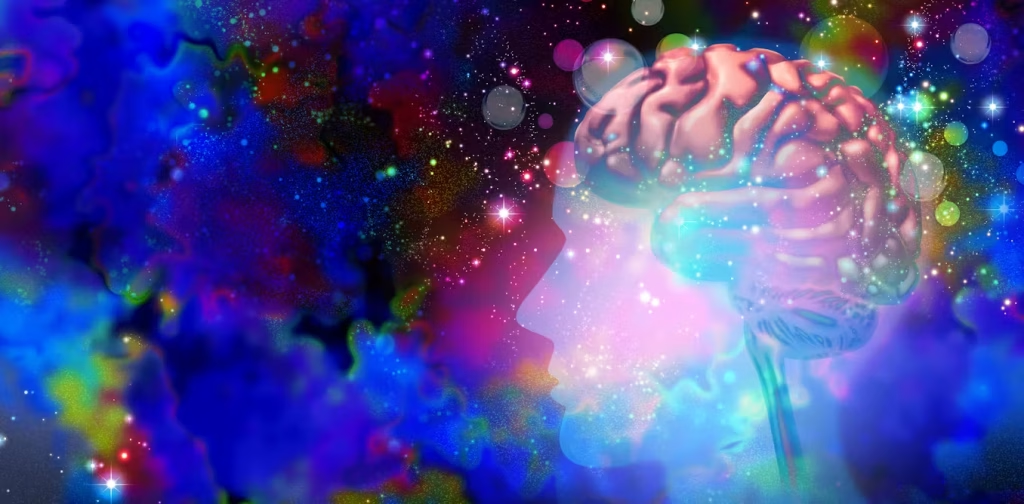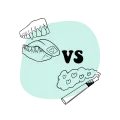DMT and Creativity: Exploring Its Influence on Art, Music, and Innovation
DMT is a powerful, naturally occurring psychedelic that profoundly impacts human consciousness. It induces intense, hallucinatory experiences. DMT has been used for centuries by indigenous cultures, particularly in the form of ayahuasca. While DMT’s effects on spirituality and consciousness are well-documented, its influence on creativity is a growing interest. This article explores the relationship between DMT and creativity across various domains like art, music, and innovation. DMT and Creativity

Understanding DMT, DMT and Creativity
What is DMT?
Dimethyltryptamine (DMT) is a tryptamine molecule that shares structural similarities with serotonin, a neurotransmitter involved in mood regulation. Often referred to as the “spirit molecule,” DMT is naturally produced in small amounts within the human brain, primarily in the pineal gland. Its psychoactive properties, when consumed in larger amounts, can lead to intense visual and auditory hallucinations, feelings of transcendence, and profound alterations in the perception of time and space. DMT and Creativity
While its use as a recreational drug has drawn attention. DMT has a much older and culturally significant history in spiritual and shamanic practices. Where it is believed to facilitate communication with divine entities and the exploration of inner consciousness. DMT and Creativity
The Effects of DMT
When consumed, DMT induces a rapid and powerful psychedelic experience, which can last from a few minutes to an hour depending on the method of ingestion. Users commonly report experiences of intense visual imagery, profound emotional shifts, and feelings of connectedness to a higher consciousness or the universe. DMT and Creativity
These experiences are often described as mystical or spiritual, with some individuals encountering otherworldly beings or having vivid life reviews. The vividness and depth of these experiences are what many believe could contribute to heightened creativity, particularly in fields like art and music. DMT and Creativity
The Link Between DMT and Creativity
The Role of Psychedelics in Enhancing Creativity
The idea that psychedelics like DMT may enhance creativity is not a new one. For decades, artists, musicians, and innovators have reported using psychedelic substances to break free from conventional thinking and access more innovative ideas. In particular, the ability of psychedelics to alter perception and increase cognitive flexibility has been linked to creative breakthroughs. DMT and Creativity
Psychedelics, including DMT, can facilitate lateral thinking, a thought process where one makes unconventional connections between seemingly unrelated ideas. This ability to see patterns and connections that are not obvious can help individuals in creative fields push boundaries and develop original work. DMT and Creativity
Scientific Research on DMT and Creativity
While there is a limited body of research specifically examining DMT’s effects on creativity, studies on psychedelics in general offer some insights. Research indicates that substances like psilocybin (magic mushrooms) and LSD can enhance creative thinking by promoting brain activity that is less constrained by the usual cognitive filters. These substances may facilitate a heightened sense of novelty, which is essential for creative thought. DMT and Creativity
Some studies have demonstrated that psychedelics can alter the brain’s default mode network (DMN), the network of brain regions associated with self-referential thinking and the filtering of incoming information. When the DMN is less active, individuals often experience a sense of interconnectedness and reduced ego boundaries, which may lead to more innovative thinking. DMT and Creativity
Although DMT’s specific effects on creativity have not been extensively studied, anecdotal evidence suggests that it can produce similar effects, allowing individuals to experience creative inspiration, deep insight, and innovative ideas. DMT and Creativity
DMT and Art
How DMT Influences Visual Art
DMT’s effects on visual perception are well-known for their vividness and intensity. Many users describe seeing intricate geometric patterns, surreal landscapes, and encounters with non-human entities. These visual experiences are often so detailed and profound that they inspire artists to translate them into physical artwork. Artists who have experimented with DMT often report heightened sensitivity to color, texture, and form. With some even creating works that directly reflect their psychedelic experiences. DMT and Creativity
DMT’s influence on visual art is evident, especially in artists who use psychedelics as inspiration. For instance, artist Alex Grey, known for his spiritual artwork, spoke about DMT’s role in accessing deeper consciousness. His detailed, otherworldly imagery reflects the visual experiences many users report during DMT trips. DMT and Creativity
DMT and Artistic Expression
Beyond visual effects, DMT may deepen understanding of the self and the universe, influencing artistic expression. For many artists, DMT can provide a temporary dissolution of ego boundaries, facilitating access to the subconscious mind. This may allow artists to express feelings and ideas that are typically suppressed or hard to articulate. DMT and Creativity
Through altered perception, artists may experience a shift in how they view the world, seeing connections between different aspects of life that they had previously overlooked. These insights may fuel creative expression in a way that is both novel and emotionally resonant. DMT and Creativity
DMT and Music
DMT’s Influence on Musical Composition
The impact of DMT on music creation is a topic of interest for musicians and researchers alike. As with visual art, DMT has the potential to alter auditory perception in profound ways. Musicians often describe a heightened sensitivity to sound and rhythm, with some noting that DMT allows them to perceive music in a new, more expansive way. This heightened auditory sensitivity may lead to new musical compositions and innovations in sound. DMT and Creativity
For instance, certain musicians, particularly in genres like electronic music, ambient, and psychedelic rock, have experimented with DMT to facilitate the creative process. The famous band The Beatles is often cited as an example of musicians whose experimentation with psychedelics. Including LSD (a substance similar to DMT), led to the creation of groundbreaking music that pushed the boundaries of popular music at the time. DMT and Creativity
Transcendence and Musical Inspiration
Many musicians who have used DMT report experiencing a deep sense of interconnectedness and unity with the universe, which may influence their musical output. This transcendental experience can help musicians tap into new creative channels, producing music that feels inspired and original. Some report that DMT facilitates the composition of complex, multi-layered musical pieces that resonate on a spiritual level. DMT and Creativity
The creative process under the influence of DMT is often described as more intuitive than analytical, with less emphasis on structure and more focus on emotional and experiential expression. This can lead to unique soundscapes that deviate from traditional forms and explore new musical territories. DMT and Creativity
DMT and Innovation
DMT’s Potential Impact on Problem-Solving and Innovation
Innovation requires the ability to think outside the box and make connections between disparate ideas. DMT, through its effect on the brain’s perception and cognitive flexibility, may aid in this process. The compound’s ability to dissolve conventional thinking patterns and encourage lateral thinking has made it an area of interest for those in scientific and technological fields. DMT and Creativity
Some individuals claim that DMT has provided them with novel ideas and solutions to complex problems. DMT enhances creativity and open-mindedness, helping individuals approach problems from new perspectives. In fields like technology, design, and engineering, DMT can shift perspectives and inspire innovation. DMT and Creativity
Exploring DMT in Modern Innovation
In the tech world, there are anecdotal reports of innovators and entrepreneurs turning to psychedelics like DMT to overcome creative blocks and generate groundbreaking ideas. While there is little formal research connecting DMT directly to technological breakthroughs. The idea of using psychedelics to enhance problem-solving and innovation is gaining traction in some circles. DMT and Creativity
Notably, Silicon Valley has become a hub for individuals experimenting with psychedelics to boost creativity and productivity. Although DMT is less commonly used than substances like LSD or psilocybin, its potential to facilitate novel thinking and new ideas has intrigued some innovators. DMT and Creativity
Conclusion
DMT’s potential to influence creativity across various fields is a compelling subject of study. From visual art to music and technological innovation, DMT may act as a catalyst for original thought and creative breakthroughs. Scientific research is catching up to anecdotal evidence from artists, musicians, and innovators about psychedelics enhancing creativity. As more research into DMT progresses, we may uncover its ability to unlock artistic and intellectual expression. Whether for spiritual exploration or creative growth, DMT’s influence offers a fascinating glimpse into human consciousness’ potential. DMT and Creativity
